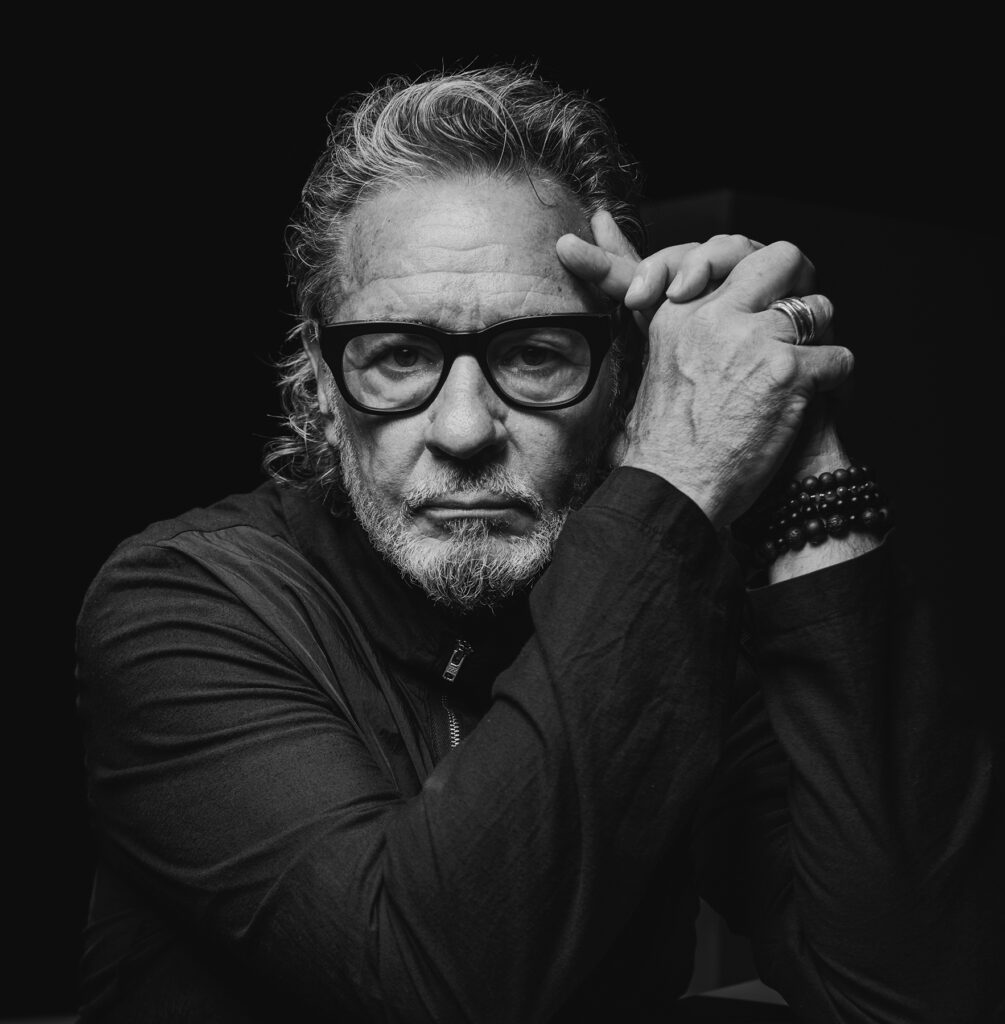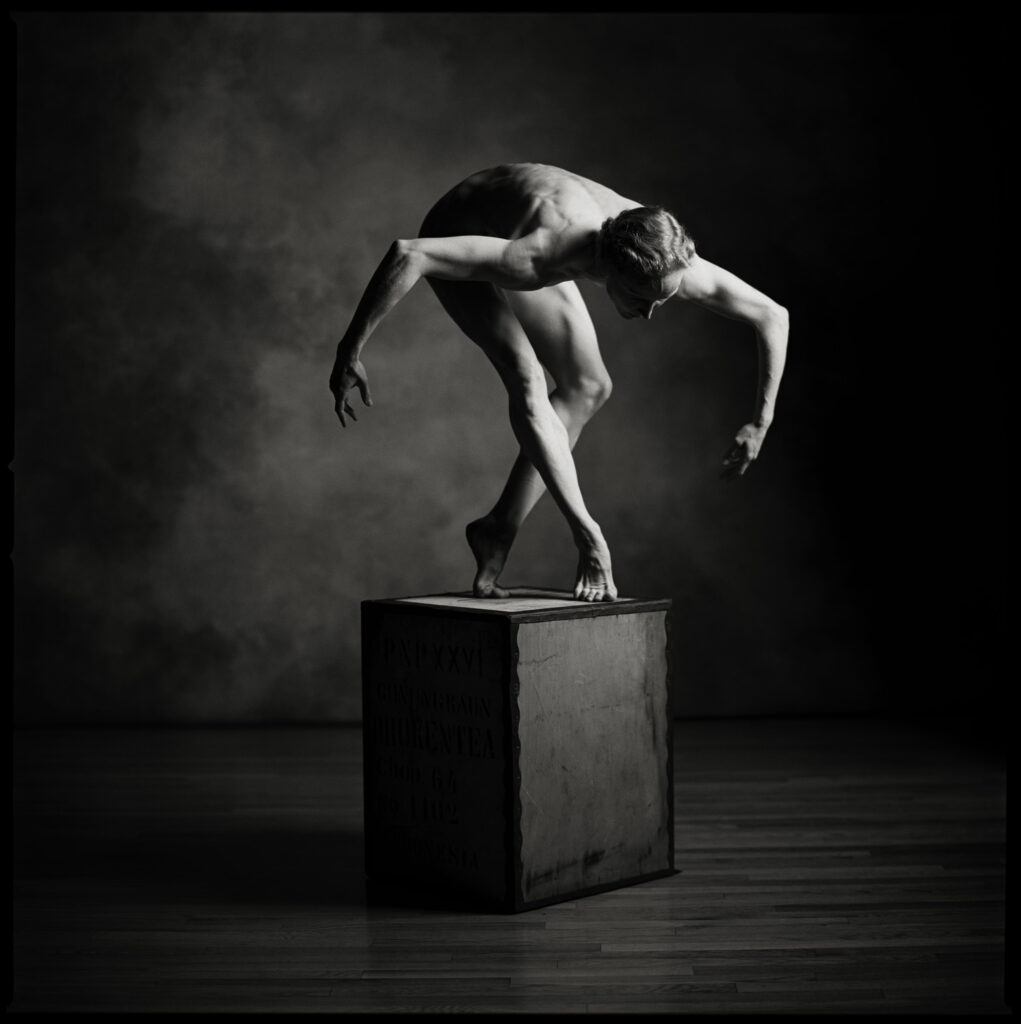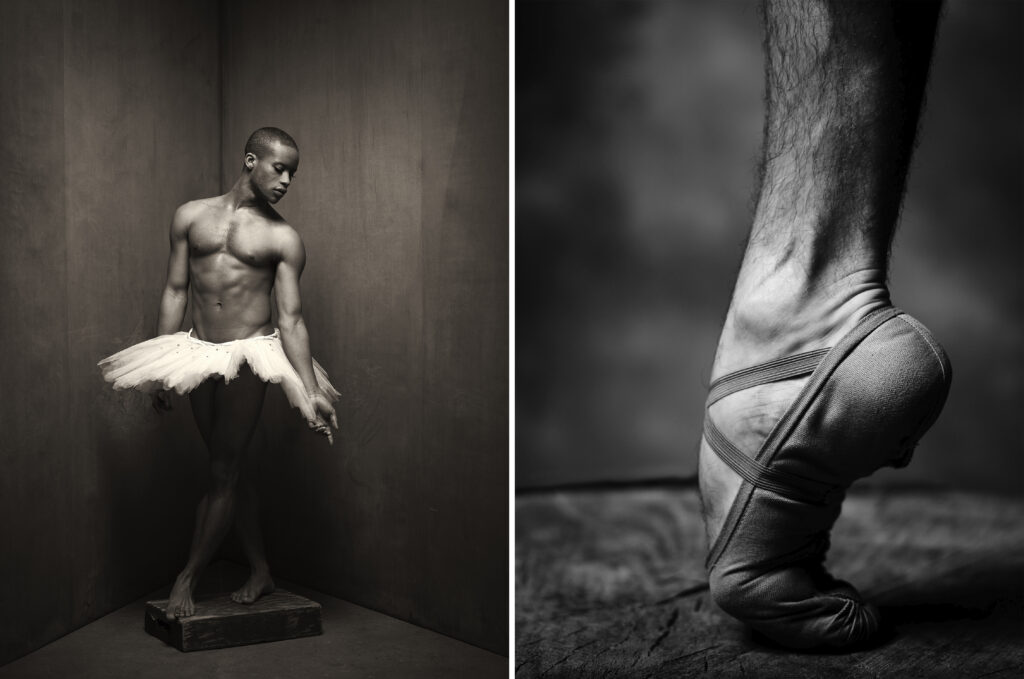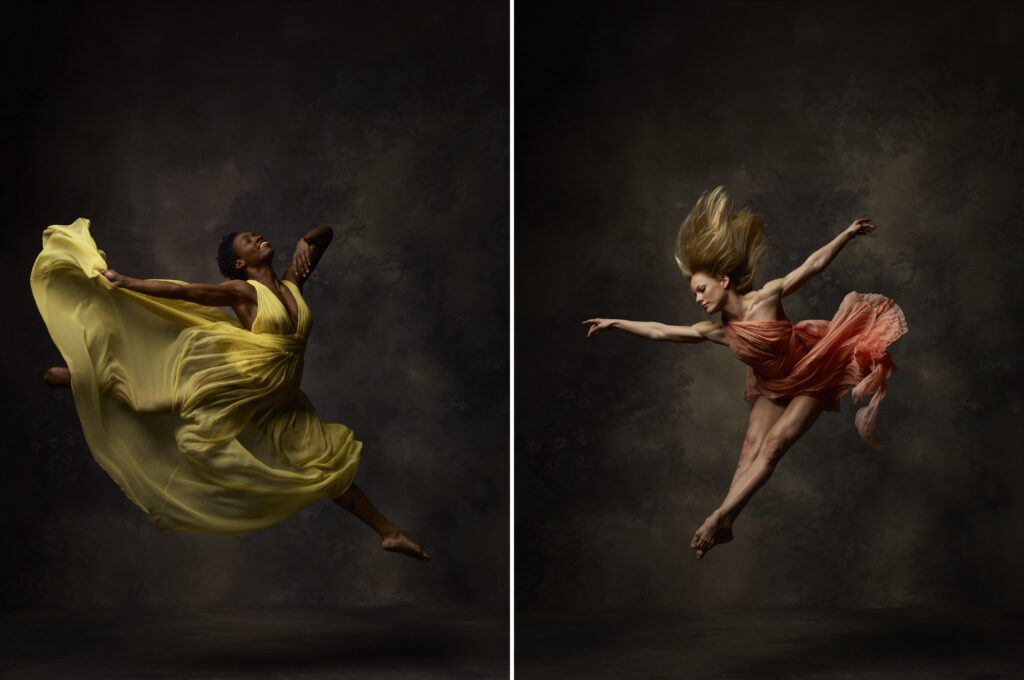For Sandro Miller, art is more than expression — it’s protest, it’s healing, and it’s a form of resistance we can’t afford to lose.
The Chicago-based, award-winning photographer’s book Dance for Life celebrates the language of the body as expressed by the city’s most celebrated performers. His 16 years of charitable work with the dance-based annual fundraiser of the same name have helped raise vital funds to support dance community professionals dealing with critical health issues.
Rather than document the dancers on stage, Miller invited them to his studio, where he could sculpt the athleticism of the performers with his lighting and capture fleeting moments and movements with strobes — effects impossible under stage lighting. The result highlights the mastery of both the performers in front of the lens and the artist behind it.
The idea for Dance for Life emerged in 1992, born out of the urgent need to support a community in crisis. At the time, the HIV/AIDS epidemic was taking a devastating toll on Chicago’s dance world. Keith Elliott, then a member with Joseph Holmes Chicago Dance Theatre, together with co-founders Todd Kiech, Harriet Ross, Danny Kopelson, and Gail Kalver, created a benefit performance that would rally the dance community and generate funding for those in need. The inaugural event, held at the Organic Theater, marked the beginning of what would become a long-running and deeply impactful tradition. In 2024, the board overseeing the charity renamed the organization from Chicago Dancers United to Chicago Dance Health Fund, aligning the name more clearly with its mission to support the health and wellness of Chicago dance professionals.
Over the course of nearly two decades, Miller’s striking images have become synonymous with Dance for Life, capturing not only the grace of movement but the urgency of the cause. In the following conversation, he reflects on his connection to dance, the process behind the photography, and the enduring role of art in a world that desperately needs it.

Mark Edward Harris: When and why did you get involved with dance?
Sandro Miller: I became aware of dance in my early 20s. I was educating myself about many different art forms, visiting museums, galleries, poetry slams, and dance performances. Living in Chicago offered me so many opportunities with such talented dance companies, such as the Joffrey Ballet, Hubbard Street Dance Chicago, Giordano Dance, and Deeply Rooted Dance Theater. Later, I would experience New York dance companies, especially Alvin Ailey, as this dance company visited Chicago for a yearly performance. Little did I know that years in the future I would have all these dance troupes in my studio, collaborating to create provocative dance images.
MEH: What attracts you to dance as an art form?
SM: Attending these dance performances, I came to realize I was being emotionally transformed and felt deep emotions such as joy, love, pain, and empathy. These athletes with their amazing bodies that they trained their whole lives with to be on these stages, with their strong, flexible, totally controlled shapes that seemed to be able to defy gravity, just left me in a state of awe. I fell in love with the art form and its emotional storytelling. I knew someday that I would need to have dancers in front of my camera.

MEH: How did this thought become a reality?
SM: My chance to have some of the very best dancers in the world to perform in front of my camera in my Chicago studio came in the mid-1990s when the founder of the Dance for Life Foundation, Keith Elliot, approached me to help him promote the gala that was the main fundraiser for the organization each year. I was given carte blanche to create images of the dancers I felt would attract huge audiences to the gala. This freedom allowed me to make provocative images, images that I was interested in creating, not images that I thought an audience necessarily wanted to see or that were ultra-safe per se. I wanted to use these dancers and their abilities to create images that were striking and powerful, heart-stopping and memorable.
The foundation was founded to raise crucial funds and solidarity around the AIDS pandemic. Many dancers, most without insurance because the companies didn’t offer insurance at the time, left the community vulnerable to the high expenses of fighting AIDS. The DFL Foundation was created to help fight off these expenses and to also donate monies to scientific research to help find cures for the virus. It was a natural for me to accept this offer as I had always wanted to be involved in the dance community photographically. It was a way for me to do my part in giving back to a cause that needed me and my imagery.
Photography speaks a language we can all relate to, and it can be used to generate funds by tapping into people’s emotions. This is the type of work I wanted to create for the foundation. I can’t go into my pocket and give $25,000, but I can create images that will help people believe they are giving money to a great cause and help raise hundreds of thousands of dollars.

MEH: How do you go about recording the essence of dance with a camera from both an artistic and a technical approach?
SM: Capturing the essence of dance comes from a deep understanding of dance and dance movement. Timing and anticipation of the moves of dancers are the two most important aspects of the great dance photograph. I have studied choreography, so I understand when the peak moment of a particular dance move will happen. It then becomes a game of anticipation and timing.
I must work with fast shutter speeds to stop motion, which involves using mega-power strobes that have super-fast flash durations. I’m watching the lines of the front and back of the bodies. I’m with an eagle eye watching the toes, the fingers, and the expressions on the dancer’s face as I need all of these details to coincide with each other at the perfect moment for the perfect photograph.
I almost always use just one light to create the maximum amount of drama. God gave us one sun to light the world, not multiple suns. I have always gone for the drama that a one-light set creates. I embrace my shadows and use specific tools to mold and sculpt my light. I light much like a Rembrandt painting, as he was my best inspiration for me creating my light.

MEH: How important is art to society, and why should it be supported?
SM: Art, whether it be painting, poetry, photography, sculpture, or dance, is the artist’s tool or weapon to fight off the darkness or the negativities of the world. Without art, we are finished. It’s vital for our mental health. There is no better cure for depression. Art heals without the use of overtaken prescription drugs. Art can foster empathy, unity, and dialogue between people. It also raises awareness and can shift public opinion on matters that sometimes are hard to translate through our news system today. With all the fake news, it’s hard to know what to believe, but art transforms and translates the news. Art is also a peaceful way to protest and show resistance. Art is food for the soul and spirit. No art, no life.
Art should absolutely be supported by our government through grants and endowments. It benefits society in so many ways. If we think in terms of mental health alone, art contributes to the positive effects on one’s depression. It would be hard to calculate the value of one’s financial savings when one compares the benefits of art to your health compared to the cost of drugs, therapy, hospitalizations, and the effects that mental health has on one’s whole family. This is a subject that could easily be discussed for days.
Our government is attacking the art world by dismantling foundations and government grants for the arts. They are stealing our voices. We are under attack. Art is under attack. If we lose this battle, we lose our spirits, our joy, and our zest for life through creation.

How to Help
Dance for Life is an annual event that showcases the talent of more than 50 Chicago-based dance companies, uniting the city’s best choreographers, dancers, designers, and artists. Since its inception, Dance for Life has raised millions to fund the Critical Health Need Grant and the General Health and Wellness Grant, among other vital initiatives of the Chicago Dance Health Fund.
The upcoming Dance for Life event is on Saturday, August 16, 2025. You can purchase tickets here.
If you’re unable to attend the event, you can make a donation to the Chicago Dance Health Fund.


Assignments have taken award-winning photographer and Make It Better Foundation Director of Photography Mark Edward Harris to more than 100 countries on all seven continents. His books include Faces of the Twentieth Century: Master Photographers and Their Work, The Way of the Japanese Bath, Wanderlust, North Korea, South Korea, Inside Iran, The Travel Photo Essay: Describing A Journey Through Images and his latest, The People of the Forest — a book about orangutans. He proudly supports the Center for Great Apes, the Borneo Orangutan Survival Foundation, and the Search Dog Foundation. You can find him on Instagram or his website.
More from Better Magazine
- A Day in the Life of a Joffrey Ballet Dancer: Behind the Scenes with Jonathan Dole
- ‘One Image Can Change the World’: How Ami Vitale Uses Her Camera to Confront Extinction and the Climate Crisis
- Photographer Cristina Mittermeier’s ‘HOPE’ Confronts the Climate Crisis with a Powerful Visual Call to Action

